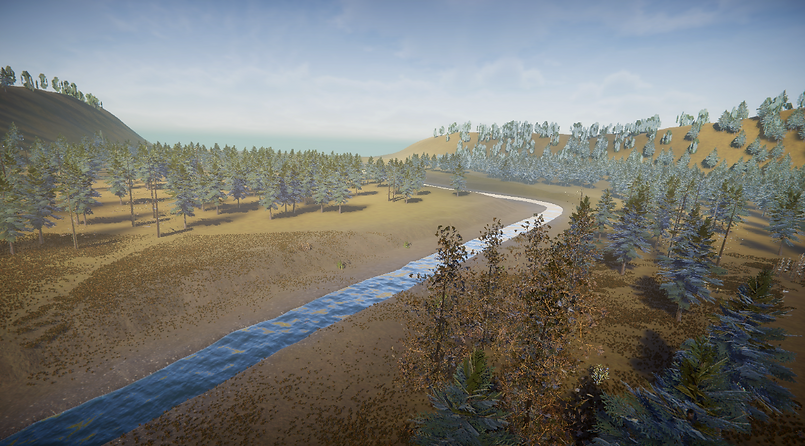
Beaver World UX Design
This is part of my thesis work based on an ongoing research project, Beaver World, a 3D educational game developed in Unity based on the Okanagan basin featuring plants and animals indigenous to the region, with target audience of middle to high school students.
My role involved designing user interface, implementing prototypes from Figma to Unity prefabs, communicating with content designers and developers.
Acknowledgement: This project is a collaborative efforts from the Center of Culture and Technology Lab at UBC-Okanagan and funded by the Social Sciences and Humanities Research Council of Canada (SSHRC) under grant F22-04404, titled “Okanagan WaterFutures: Experiential Games for Water Responsibility, with Dr. Aleksandra Dulic as the principal investigator and Dr. Patricia Lasserre, Dr. Miles Thorogood, and Anna Warwick Sears and co-investigators.
User Research & Persona Design
To address different learning and gameplay preferences, I studied Kolb's learning styles to understand how people perceive and process information. In addition, Bartle's player types offered me insights on how people interact with the game environments.
In this project, I focused on the Achievers and Explorers types, which best align with our target audience. These players value goals, progress tracking, and world-building, By understanding both learning and playing styles, we were hoping to design a more inclusive, engaging, and educationally effective game experience.

Kolb’s Learning Styles. Figure adapted from [2], [4].
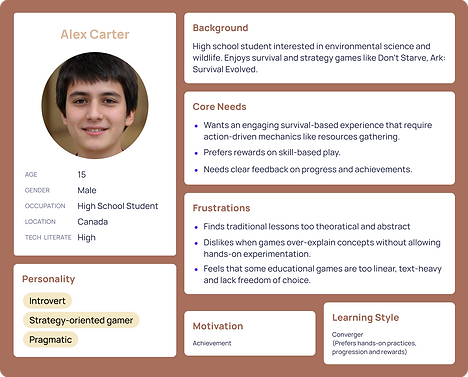
Emma, on the other hand, values emotional storytelling and creative interaction. She aligns with the Diverger learning style and the Explorer/Socializer type. She prefers intuitive design, visual storytelling, and open-ended exploration.
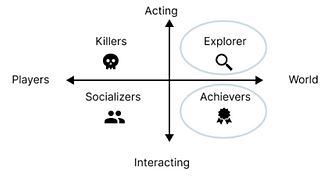
Bartle’s Player Types, Adapted from [1], [3].
To guide the design process, I created two personas based on Kolb’s learning styles and Yee’s updated player motivation model from Bartle’s model.
Alex is a goal-driven, pragmatic player who prefers skill-based survival mechanics. He reflects the Converger learning style and aligns with the Achiever player type. For Alex, clear feedback, progress tracking, and hands-on gameplay are essential.
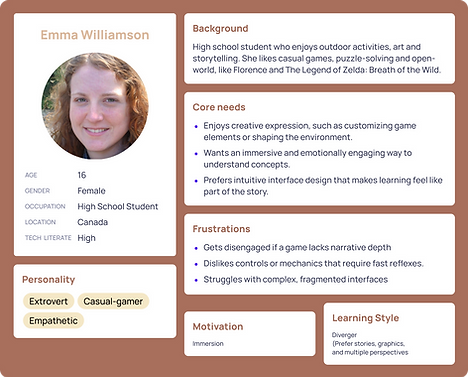
Moodboard

In the moodboard, I initially chose earthy browns and beige inspired by the beaver’s behavior—collecting wood and mud to build dams—which also connects to the game’s mechanics.
These colors reflect natural textures like bark and soil, and reinforce the notebook-style interface for learning content.
To ensure clarity and balance, I added gray as secondary colors and applied the 60-30-10 design rule for visual hierarchy. [5]
HUD Canvas
the HUD consists of three main components: player statistics, a mini-map, and five UI icons for missions, inventory, encyclopedia, and game settings These elements are designed to monitor player status, help navigation, and access learning content during the gameplay.

Mission, Inventory, Notebook, Settings, Profile
Player Status
Mini-map
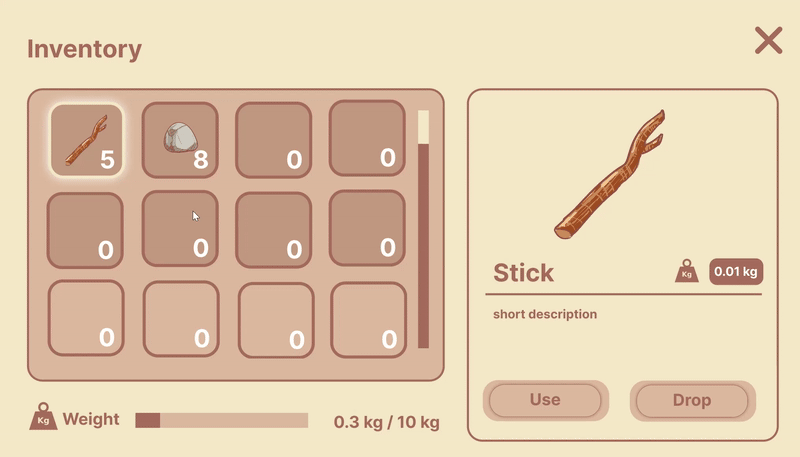
Inventory
The inventory allows the player to view, use, or drop items that they have collected in the game. When an item is selected, the entry displays the item's name, a short description explaining its function or benefits to beaver's survival status, and options to either drop or use the item.
More importantly, it supports one of the core mechanism that was newly introduced-resource management. This approach was inspired by survival game mechanics, encouraging players to learn from discovery and prioritize essential items, fostering strategic decision-making.
Mission System
This is your Project description. Provide a brief summary to help visitors understand the context and background of your work. Click on "Edit Text" or double click on the text box to start.
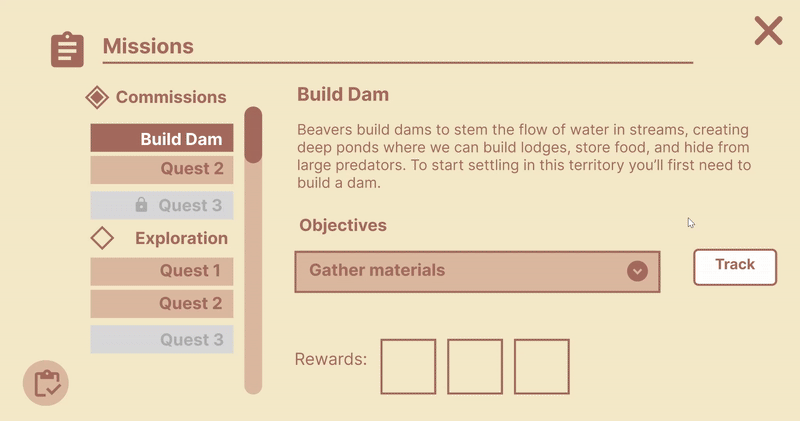
The tracking option allow allows the player to focus on one mission at a time. By clicking the "Track" button, players can marks a mission as active, which opens up a collapsible sidebar during the gameplay
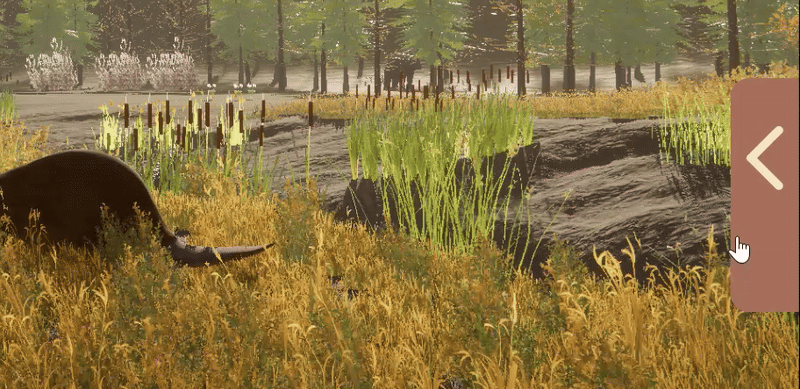
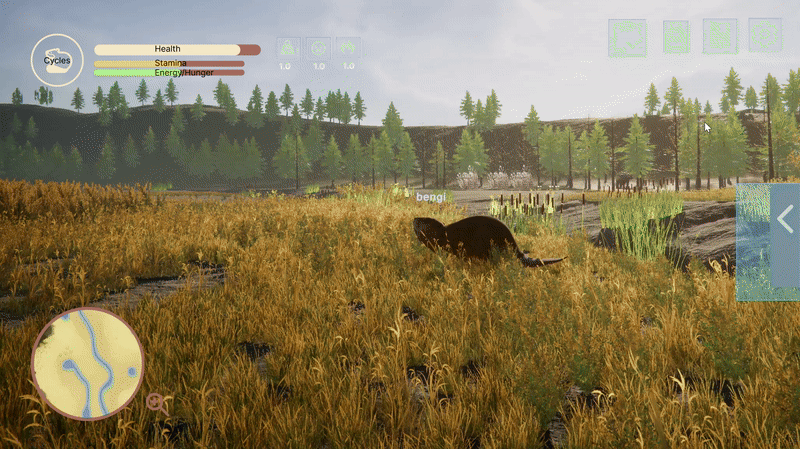
Encyclopedia
The Encyclopedia functions as an interactive knowledge bank that supports discovery-based learning. Items unlock only when players encounter them in the game.
The categories filter serves to provide better organization of types of encountered items, including plants, animals, and artifacts.
Game Settings
The setting panel to give users more control over the game. Planned features include adjusting the audio volume and graphics quality profiles
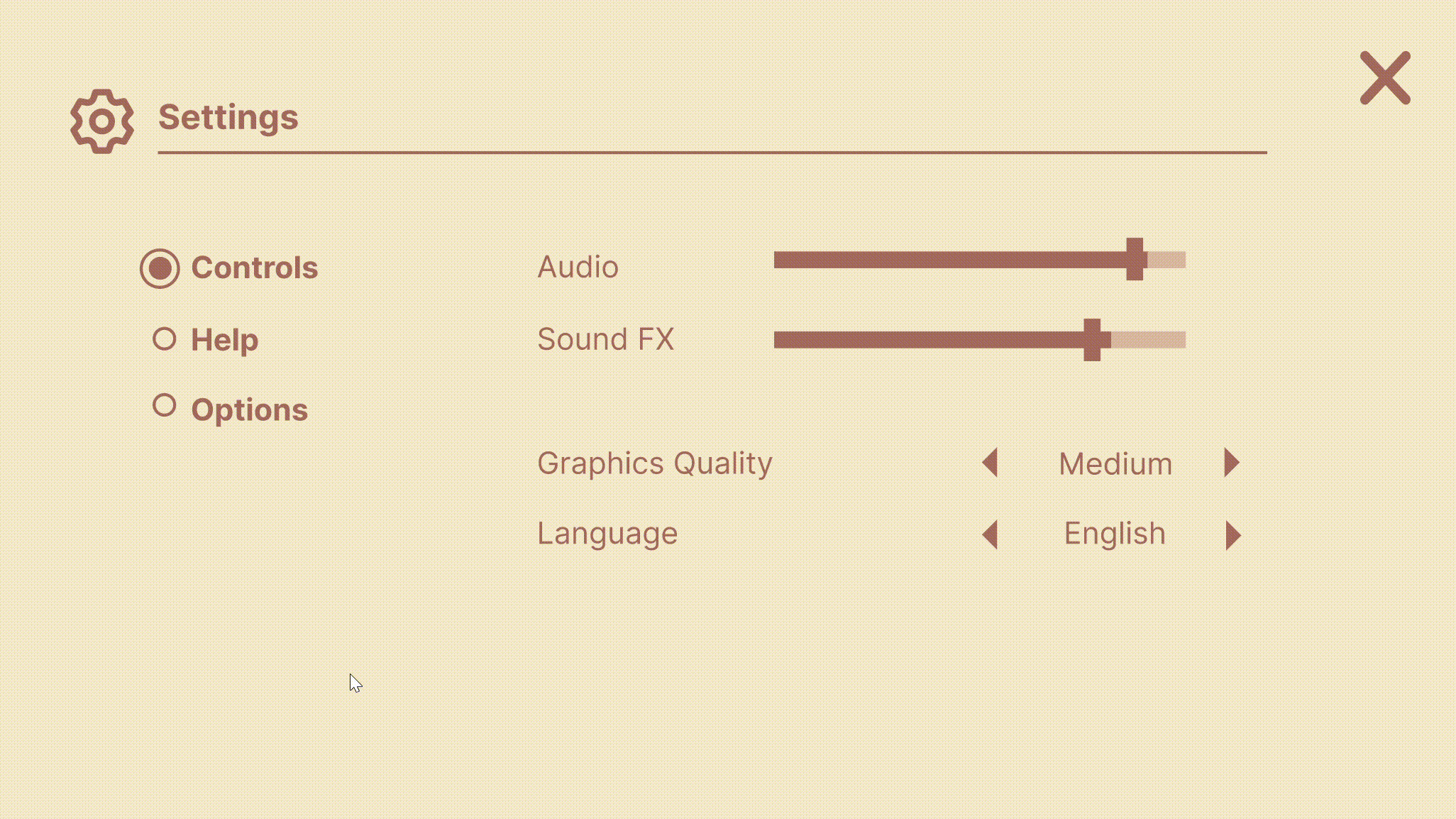
In-game feedback
These status are displayed as icons next to the health bar, each with a visible countdown timer. When the player hovers over a status icon, a floating tooltip provides a brief explanation of its effect.

References
[1] Richard Bartle. Hearts, clubs, diamonds, spades: Players who suit muds. 06 1996.
[2] David A Kolb et al. The Kolb learning style inventory. Hay Resources Direct Boston, MA, 2007.LSC24] Mingke Lyu, Xinyi Shan, and Jeanhun Chung. A study on the freedom of open world games: Focus on. International journal of advanced smart convergence, 13(3):253–258, 2024.
[3] Nick Yee. The psychology of mmorpgs: Emotional investment, motivations, relationship formation, and problematic usage. Avatars at work and play: Collaboration and interaction in shared virtual environments, 34:187–207, 2006.
[4] Danijela Milosevic, Mirjana Gojkovi´c, Matjaˇz Debevc, and Radojka Krneta. Adaptive learning by using scos metadata. Interdisciplinary Journal of Knowledge and Learning Objects, 3, 01 2007.
[5] Interaction Design Foundation. Ui color palette: Finding the perfect colors for your interface, n.d. Accessed: 2025-04-14.